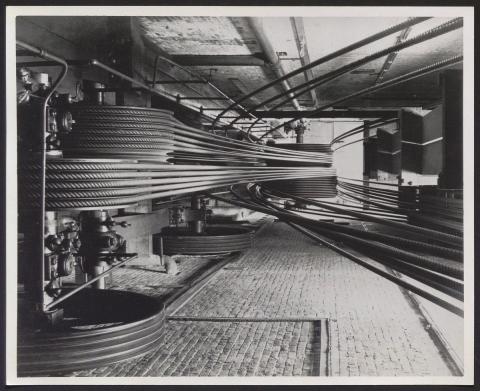
Say cheese! On this day in 1839, the French government purchased the patent rights to the daguerreotype process, the first publicly available photographic process, and then relinquished its claim and published complete working instructions, declaring the technology a “free gift to the world”.
In exchange, Louis-Jacques-Mandé Daguerre (1787-1851), the inventor of the daguerreotype, was provided with a lifetime pension. A lifetime pension was also extended to Isidore Niépce (1805–1868), the son of Nicéphore Niépce (1765-1833), an inventor who, in 1822, had produced the world’s first heliograph, a photographic process used to create the world’s oldest known surviving photograph from nature.
Here at Hagley, we're spoiled for choice when it comes to the history of photography, but for this year's observance, here's a photograph by David W. Butterfield (1844-1933), taken inside the Plymouth Cordage Company factory of Plymouth, Massachusetts around the year 1900.
Butterfield's claim to fame in the history of photography began early in his career. In 1864, the young photographer had the fortune to obtain a sitting with President Abraham Lincoln. The resulting photograph (which can be seen here) became quite popular, especially after Lincoln's assassination in April 1965.
As a result, Butterfield attracted new clients from among the nation's most prominent figures and celebrities, such as Thomas Edison, Henry Ford, Andrew Carnegie, Alexander Graham Bell, William Jennings Bryan, Clara Barton, Samuel F.B. Morse, and Henry Cabot Lodge. These rolls of cordage, then, moved in some very illustrious company.
Butterfield's services were also requested by many of Lincoln's successors. Since Butterfield's career lasted until 1929, when he retired at the age of 85, this meant that his camera captured decades of American presidential history. Over the years, he developed a reputation as being the "photographer to the presidents", whose clients included William McKinley, Ulysses S. Grant, Calvin Coolidge, Theodore Roosevelt, and Herbert Hoover.
This photograph is from Hagley Library’s Plymouth Cordage Company album (Accession 1982.231). The company was founded in 1824 by Bourne Spooner (1790-1870), an ardent abolitionist whose commitment to free labor ideology led the company to implement generous employee benefits and facilities for its workers. By the late 19th century, the company had become a major international manufacturer of rope and twine. Its products were in heavy use within shipping and fishing industries, though its binder twine was also in widespread use on farms.
This album documents the company's operations in the years around 1900. It contains sixteen photographs taken by David W. Butterfield of plant interiors showing machinery and manufacturing processes, and two exterior views of the building. Click here to view it online in our Digital Archive now.

